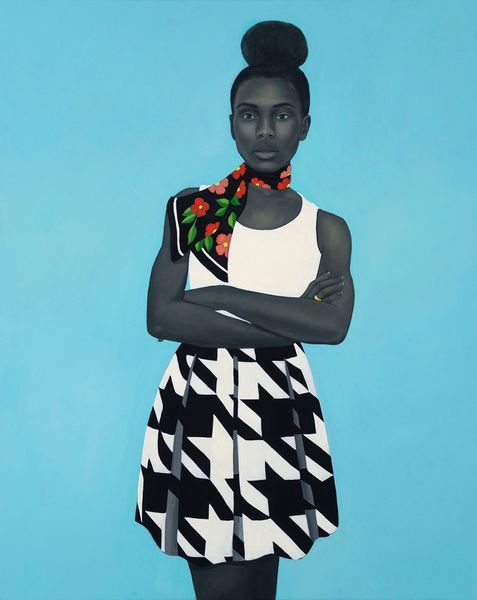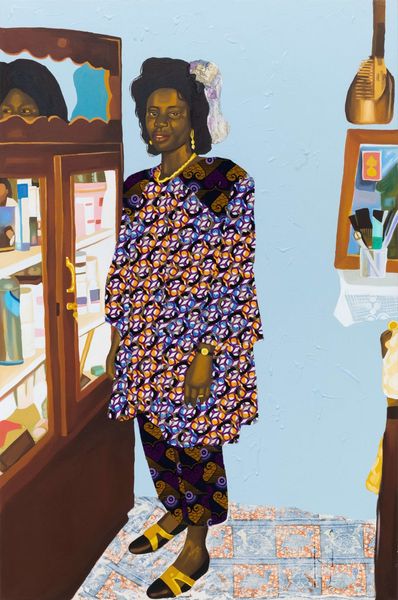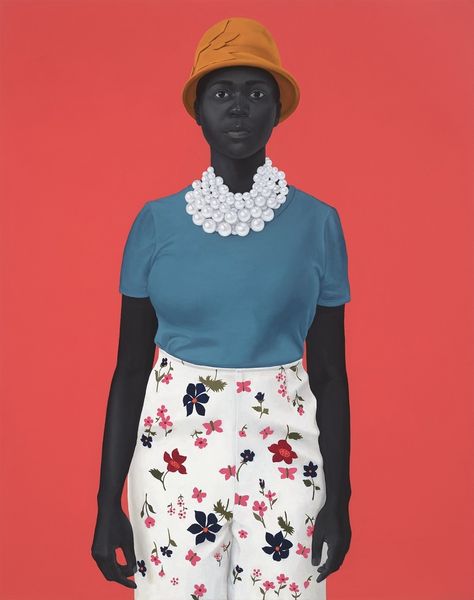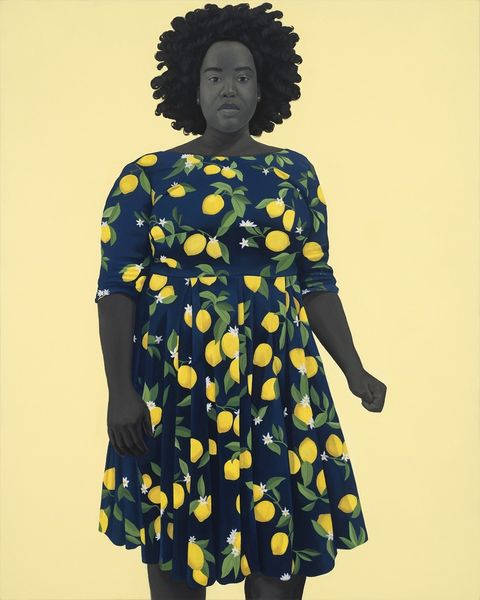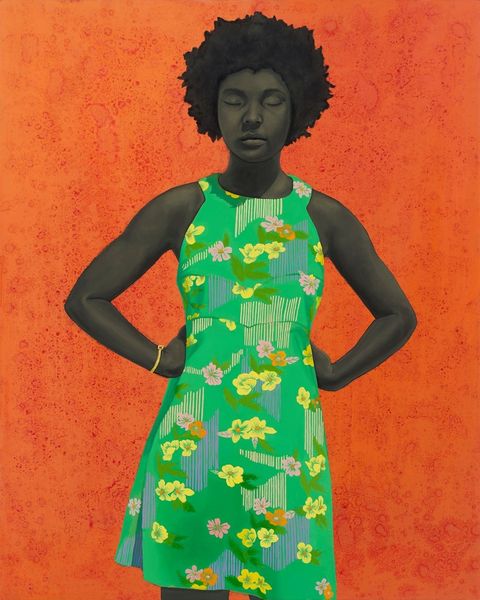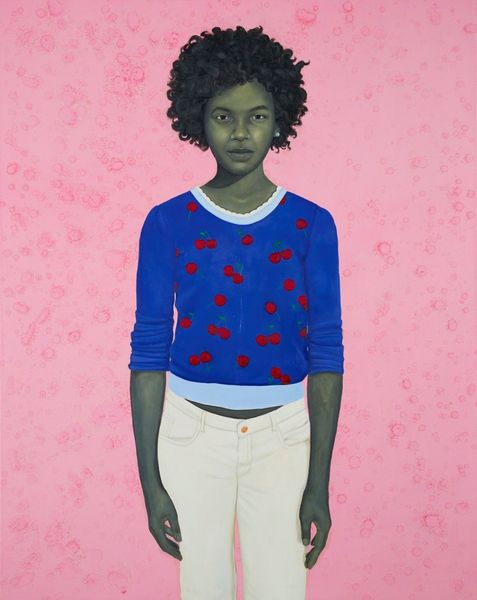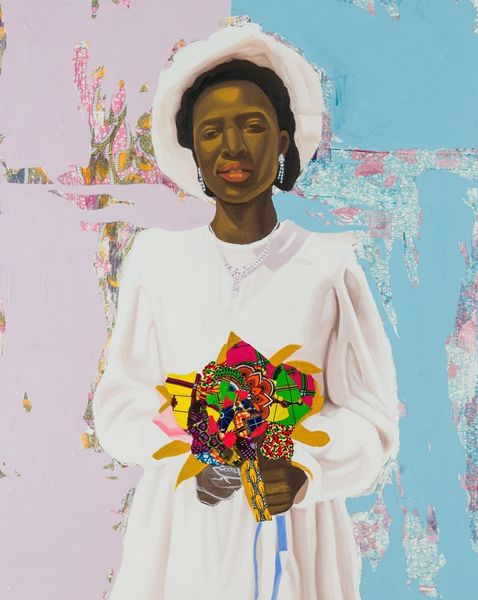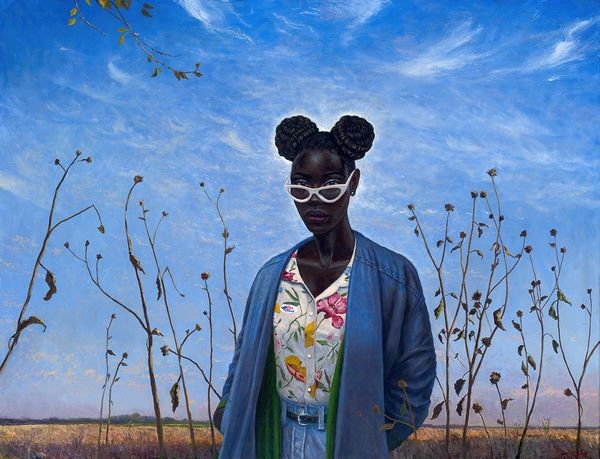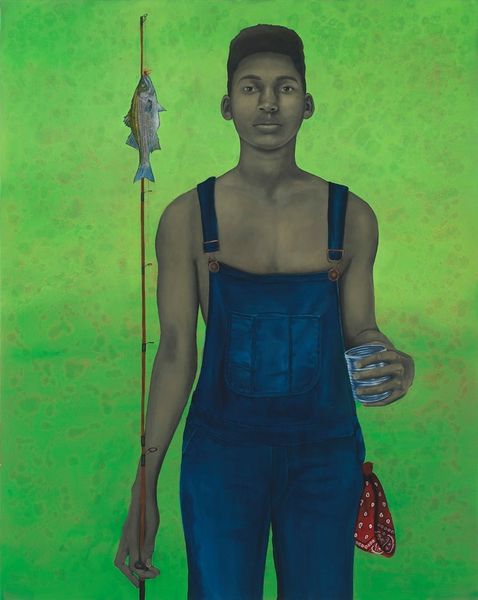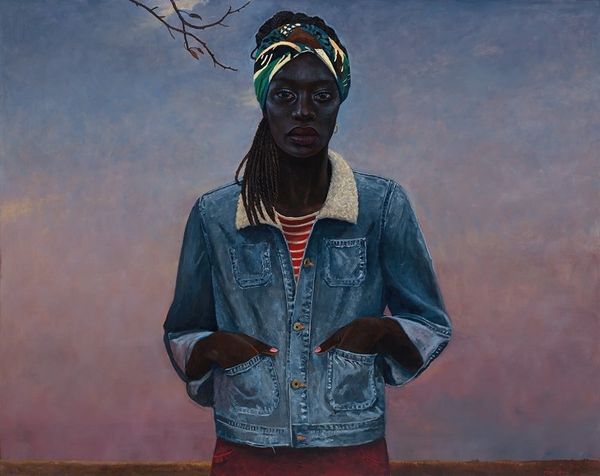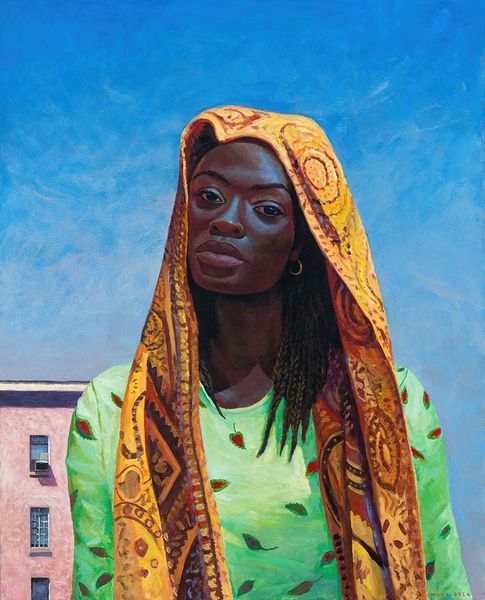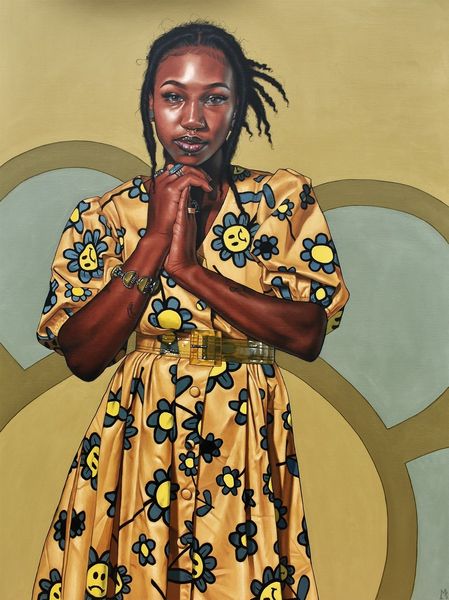
Fact was she knew more about them than she knew about herself, having never had the map to discover what she was like 2015
0:00
0:00
painting, acrylic-paint
#
portrait
#
figurative
#
contemporary
#
painting
#
acrylic-paint
#
figuration
#
portrait art
Copyright: Modern Artists: Artvee
Curator: Let’s discuss Amy Sherald’s striking painting from 2015, "Fact was she knew more about them than she knew about herself, having never had the map to discover what she was like." Editor: My initial impression is one of remarkable stillness, yet the high-key palette of robin's egg blue, poppy red and royal blue seems to vibrate against the figure's somber, almost monochrome skin tone. Curator: Exactly, Amy Sherald is known for these grayscale portraits of Black Americans set against boldly colored backgrounds, often playing with historical portraiture conventions. Her figures are stylish, poised, but also assert a quiet strength, a refusal to be stereotyped or easily read. The title hints at the experience of Black women often being more familiar to dominant cultures than they are to themselves. Editor: I see that tension playing out in the composition. The flatness of the color fields almost turns the figure into a graphic element, while the subtle shading on the skirt gives it volume, a near-hyperreal effect that is unsettling. What’s acrylic-paint work like, in the physical world? Curator: The use of acrylic on canvas reinforces this idea; acrylic allows for the creation of these very flat, matte planes of color, it is hard to forget it’s paint. It highlights the artificiality of representation, reminding us that this is a constructed image with its own agenda, challenging notions of visibility and identity. The blue references the in-between space, the sky as metaphor of possible freedom, perhaps? Editor: Perhaps, yes. But even though this blue seems to convey depth through its expansiveness, the folds of fabric that suggest depth in color seem shallow: the portrait's artifice isn't simply the construction of color, it's about dimension too. Is there any deeper reference to past Black portraits or photography with this treatment? Curator: Yes. There is the subtle gaze directly engaging with the viewer subverts that tradition while invoking themes of self-knowledge and the gaze itself as a site of power and misinterpretation. Sherald reclaims that space, endowing her subject with dignity and agency. Editor: And it really prompts thinking about flatness, color planes, tone. I feel that this experience reframed my perception of form and substance, while providing historical context to challenge my perceptions. Curator: I think understanding both elements allows us to fully engage with Sherald's profound statement about identity, perception, and the ongoing project of self-discovery in the face of societal pressures.
Comments
No comments
Be the first to comment and join the conversation on the ultimate creative platform.
